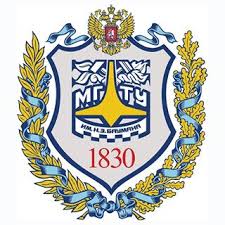
Bauman Moscow State Technical University
Overview
Bauman University is the second oldest educational institution in Russia after Lomonosov Moscow State University (1755). In 1763, the Russian Empress Catherine II founded the Educational Imperial House. On October 5, 1826, the dowager Empress Maria Feodorovna issued a decree to establish "great workshops for different crafts with bedrooms, a dining room, etc." as a part of the Moscow Foundling Home in the German Quarter. All craft pupils were moved from an Orphanage there. On July 1, 1830, Emperor Nicholas I approved the Statute of Moscow Craft School.
Russia's developing industry needed skilled labor in many trades with the aim of the new school being to train artisans with a theoretical background to improve and spread skills in various trades all over Russia. New schools were created to teach crafts as well as basic sciences. In 1868 MCS was reorganized into the Imperial Moscow Technical School (IMTS) under the directorship of Victor Della-Vos. The main purpose of IMTS was to "educate construction engineers, mechanical engineers and industrial technologists".
The IMTS was financially supported by the Government and industrialists. Its management was democratic. A key feature of the new institution was its educational system called the "Russian method",[8] which unifies a broad and intensive theoretical preparation with a deep practical education closely connected with industries. The school participated in the Universal Exposition in 1873 in Vienna and the Philadelphia Centennial Exhibition of 1876. It proved to be influential on John Daniel Runkle when he introduced manual training alongside theoretical training at the Massachusetts Institute of Technology.[9] It was also applied to other American technical universities.[10] Many scientists taught in IMTS, such as D. Mendeleev, N. Jukovsky, P. Chebychev, S. Chaplygin, A. Yershov, D. Sovetkin, F. Dmitriev, A. Letnikov.
In the Soviet period IMTS was renamed Bauman Moscow Higher Technical School (BMHTS), after revolutionary Nikolay Bauman. BMHTS continued education of engineers for machine and instrument building. In 1938, new military departments were created in MHTS such as tank, artillery, and ammunition. In 1948 a rocket department was added.
On 27 July 1989 USSR State committee for peoples education conferred on Moscow Higher Technical School a name of Bauman Moscow Technical University (BMSTU). BMSTU was honored to be the first Russian technical university. Nearly 200,000 students graduated from the University. Most of them chose to become scientists or engineers in leading research centers, universities, private and government owned companies. Many of government officials, chief designers, CEOs of big enterprises, and cosmonauts are Bauman graduates, as noted below in the alumni section.
Programs
Admissions
Scholarship
Placement
Cuttoff
Campus
-
College Type Public
-
Established In 1830
-
Max. Package $43.95 LPA
-
Fee Range $4,395
-
Courses Offered 35
-
NIRF Ranking 230
-
Total Faculty 19
-
Total Intake 4300
